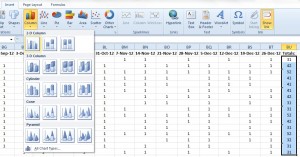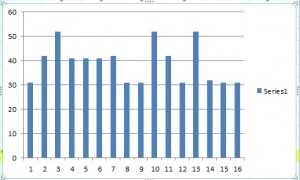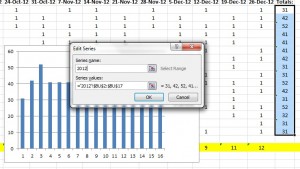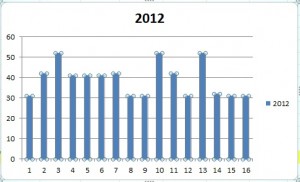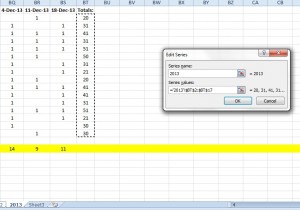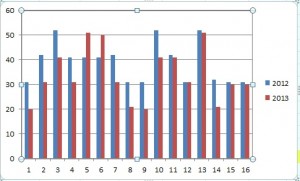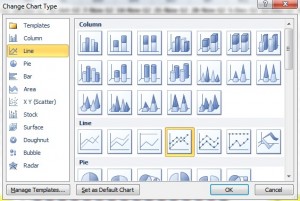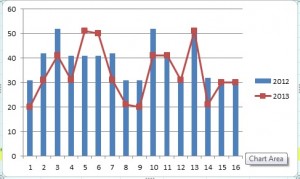A year ago today, we officially started Youth Workin’ It. Here’s a video message from us to you to celebrate!
Life Skills For Teenagers – Food Shopping

In the past, we’ve covered many different life skills for teenagers, one of which was a session on meal planning. Another life skill that’s important for youth to learn is food shopping, so that’s what we’ll be covering in both this week’s and next week’s session idea.
There’s actually a lot you can cover when it comes to teaching young people about buying groceries, so we’re just going to focus on a couple of important areas these two weeks.
General Food Shopping Tips
Print off a list of these tips to give out to all the youth. If possible, laminate the lists so that they’re more likely to keep them afterwards.
- Don’t go grocery shopping when hungry
- Check use by dates, particularly on chilled items and bread
- Buy chilled & frozen food at the end of the shopping trip so that they don’t get warm / defrost
- Compare prices of premium brands vs cheaper brands/store brands
- Compare unit prices (e.g. $1.35 per 100g for smaller pack vs $1.13 per 100g for larger pack of the same item)
- Shop in the evening to take advantage of reduced price meats that can be frozen down
- Look at products on all levels of shelves, as expensive items are often placed at eye level to encourage you to buy them, with cheaper brands on the top or bottom shelves instead
- Consider buying in bulk so that you can cook in bulk and freeze down meals
- Plan meals in advance and the ingredients that you’ll need to cook them
- Make a list of items you need and stick to it (suggest using apps like Evernote if they think they’re likely to forget to take a paper list with them)
- Check mail, newspapers, etc for coupons
- Sign up for membership/loyalty cards if grocery stores have them (emphasize the difference between a membership/loyalty card and credit cards, as they may be encouraged to sign up for a credit card inadvertently at the checkout)
- Check nutritional information on packaging
- Don’t take advantage of promotions like “3 for the price of 2” if you only need one item
- Take a calculator with you (or use one that’s on your phone)
Add any extra tips that you can think of. Next, allocate one of these points to each young person (or split them into smaller groups to discuss if you have a larger group).
Ask them to spend some time considering why their point is important to bear in mind when food shopping, then have them present their thoughts to the rest of the group. Alternatively, each point could be covered in a group discussion where the whole group considers each point together.
Finally, have your youth try to come up with their own tips of food shopping life skills for teenagers. If they come up with a number of additional ideas, make a note of them and give them an updated laminated list at your next session.
Question: What other food shopping tips would you give to youth? Share your ideas in the comments below.
You can also connect with us by:
- Signing up to receive our posts via email
- Following us on Twitter
- Liking us on Facebook
- Signing up to our RSS feed
How To Use Charts and Graphs To Track Individual Youth Attendance
 Over the past few weeks we’ve been showing you the many ways in which you can use Excel – and subsequently the charts and graphs feature in Excel – to track youth attendance. It’s valuable for many reasons, but two main ones are for proving outcomes in monthly and annual reports and to provide quantitative data for potential or current funders and donors.
Over the past few weeks we’ve been showing you the many ways in which you can use Excel – and subsequently the charts and graphs feature in Excel – to track youth attendance. It’s valuable for many reasons, but two main ones are for proving outcomes in monthly and annual reports and to provide quantitative data for potential or current funders and donors.
Our final charts and graphs today will show individual youth attendance. This is particularly useful if you have an ongoing program like a faith-based youth group or any other kind of youth club. You’ll be able to see what Johnny’s attendance was each year he was in your program, or if Jane’s attendance steadily increased or when Billy’s attendance dropped off after his parent’s divorce.
If your data will be used outside of your organization remember confidentiality and use codes to identify the youth in your program. In our example, we’ve just numbered the youth 1-16. However, if you’re using this purely for internal data you can also change the axis labels to show youth names.
Firstly, a column chart to clearly show side by side the attendance of your youth from year to year.
1) Open the youth attendance spreadsheet
2) Select or highlight the data from Column BU Row 2 to Column BU Row 17
3) Click the ‘insert’ tab at the top
4) Choose ‘column’ and click on the first 2D column chart
5) Right mouse click on the chart and choose ‘select data’ from the menu that appears
6) Under Legend Entries (Series) Select ‘Series 1′ and click ‘Edit’
7) In ‘Series Name’ type ’2012′ and click ‘ok’
8) In the box that appears now click ‘edit’ under the Horizontal (Category) Axis Labels
9) A data range box has appeared, select Column A Row 2 through Column A Row 17 and click ‘ok’, then click ‘ok’ again. (This is where you can choose to use student names if you want and you would instead choose Column B Row 2 through Column B Row 17)
Now you have the basics of your column chart (n.b. you may need to scroll along the spreadsheet to see the graph displayed).
To add 2013′s data to the same line graph, follow a similar process:
1) Right mouse click on the chart and choose ‘select data’ from the menu that appears
2) Under Legend Entries (Series) Select ’2012′ and click ‘Add’
3) In ‘Series Name’ type ’2013′. In the ‘Series Values’ box, delete the symbols there. Go to the bottom of your spreadsheet and click on the 2013 tab, select the data from Column BT Row 2 through Column BT Row 17 and click ‘ok’
4) In the box that appears now click ‘edit’ under the Horizontal (Category) Axis Labels
5) A data range box has appeared; click the 2013 tab and select Column A Row 2 through Column A Row 17 and click ‘ok’, then ’ok’ again.
Now you have a column chart that shows the attendance for each individual youth side by side for 2012 and 2013.
You can also easily view this same data as a line graph with markers
1) Right click on your column chart
2) Select ‘Change Series Chart Type’
3) Select the fourth line graph shown ‘line graph with markers’ and click ‘ok’
This shows you the same data as the side by side comparison of the column chart, but it might also show the relationship between youth attendance in each year more clearly as well.
This concludes our series on how to use Excel, charts and graphs to track youth attendance.
Question: How useful has this series been for you? Please share your thoughts in the comments section below.
You can also connect with us by:
- Signing up to receive our posts via email
- Following us on Twitter
- Liking us on Facebook
- Signing up to our RSS feed
Youth Worker Interview Questions – Part 5

We’re in the final week of our series looking at possible youth worker interview questions. Each week we’ve given you tips and advice on how you can best prepare for and answer possible interview questions:
- Week 1 – 20 questions you might be asked in a youth work interview
- Week 2 – How to answer job interview questions about yourself
- Week 3 – How to answer interview questions about how you work
- Week 4 – How to answer interview questions about how you work with youth
Q: I have a job interview coming up. What kind of youth worker interview questions can I expect to be asked?
A: You can expect to be asked questions that are job or role specific. These are going to be questions that we can’t help you answer specifically, but we can offer a few tips on how to approach your preparation for such questions.
Possible types or styles of questions include:
- How much experience do you have working with (insert type of youth work you’re applying for here – e.g. foster care, black, Muslim, LGBTQ, refugee, Latino/a, at-risk, homeless, etc.) youth?
- (Faith-based) What theological training do you have and how would you engage youth in the discipleship process?
- Please create a session plan around (insert topic for type of youth work you are applying for here – e.g. youth leaving prison, youth excluded/expelled from traditional school, sexual health awareness, bible study/church small group, global youth work, etc.) and be prepared to present it with a group of youth (or to the interviewers). You have 20 minutes to plan and 10 minutes to present.
- What are the three most important things to remember when doing _____________ activity with youth? (This may be a question for those planning youth trips or working at youth activity centers)
Here are 3 tips for preparing for these kinds of youth worker interview questions:
1. Know that you have all or most of the required skills and experience before the interview
Theoretically, this has already happened at the application stage. You can expect to be asked detailed questions about how long you’ve done this particular type of youth work and what your experiences are, so don’t expect to wing it based on the brief information provided in your application or on your resume/CV.
If you have already confirmed that you have the right amount of experience and training working with that youth population, you should have ample situations and scenarios to build on when answering any tough questions.
2. Take time to find out about the interview process and if there are any tasks you will be expected to do during the interview.
Find out if it is a panel interview or a one-on-one session. Ask if you will be presenting to youth, creating an example session or completing a mock-budget task. Find out if you will need to plan a trip in 15 minutes or come up with ideas for media projects on the spot.
Take the time to prepare beforehand. Then, when you are presented with your planning and execution time you will already have some ideas formulated. They may not tell you much because they want to see what you will do under pressure; if that’s the case, still take the time to consider possible options that they may present you with based on your experience.
You’ll already be a little nervous on the day, so taking time to prepare answers and ideas beforehand – even just engaging in the creative process – will only improve your responses during the interview.
3. Be yourself
If you’re applying for a niche role, you’re most likely interested in it and passionate about it. Allow that to shine through and support all the preparation you’ve done before the interview.
We hope that you’ve enjoyed this series on youth worker interview questions and that it will help you when preparing for your next interview.
Question: What other questions have you been asked when interviewed for youth work jobs? We’d love to hear in the comments below.
You can also connect with us by:
- Signing up to receive our posts via email
- Following us on Twitter
- Liking us on Facebook
- Signing up to our RSS feed
How To Play The Toilet Paper Bride Game
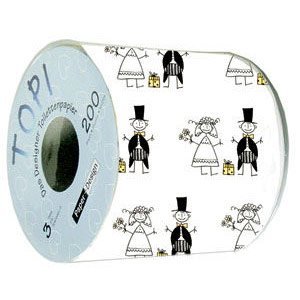
Last week we showed you how to play the Toilet Paper Mummy; this week, it’s the Toilet Paper Bride. The two games are quite similar, but this version has more of a design element to it.
Resources
- Loads of toilet paper.
Set Up
- Split the young people into teams, with an equal number on each side (if possible). It’s also best to separate the teams by gender, as this should help reduce the risk of inappropriate touching due to the nature of the game.
- Give each team about 3-4 rolls of toilet paper, although this will depend on the length of the rolls.
To Play / Rules
- Each team should select one person to become the Toilet Paper Bride. If you’ve separated teams based on gender as suggested above then yes, this means boys will have to be brides!
- The other members of the team should then dress up this person as a bride using the toilet paper. This should include a veil, train – the whole works
- If the roll breaks, they should tuck the end in so that it doesn’t unravel, then carry on
- Set a time limit (between 5 – 10 minutes is best) for them to “clothe” their Toilet Paper Bride
Winning Team
The winners are the team whose bride has the best design, as judged by you or a panel of your volunteers. To make it even more funny, you could have them parade their dresses up and down a catwalk.
Tips
- The Toilet Paper Bride game uses a lot of paper so to reduce wastage, collect the toilet paper at the end and recycle it
- This game can be really funny, so get some photos or video footage
- If you lead a Christian youth group, this game could be used when teaching about the church being the bride of Christ or when Jesus turned water into wine (as that was done at a wedding celebration)
If you liked this idea, you may like all of our other youth group games.
Question: Would you include any additional rules when playing the Toilet Paper Bride game? Let us know in the comments below.
You can also connect with us by:
- Signing up to receive our posts via email
- Following us on Twitter
- Liking us on Facebook
- Signing up to our RSS feed
